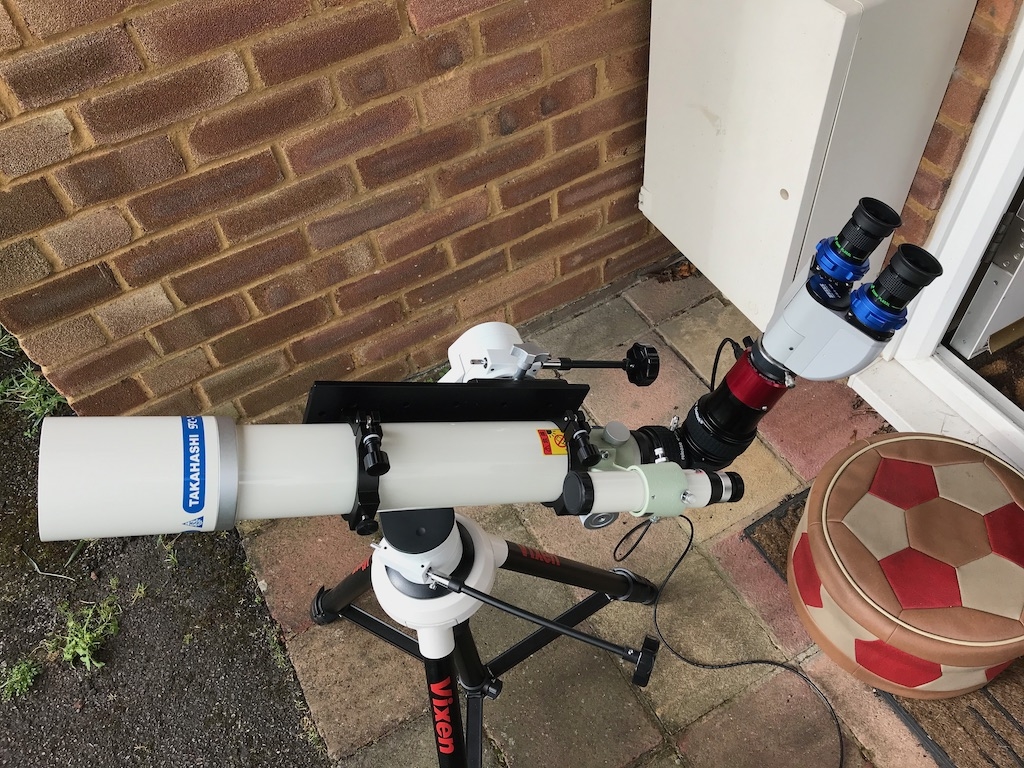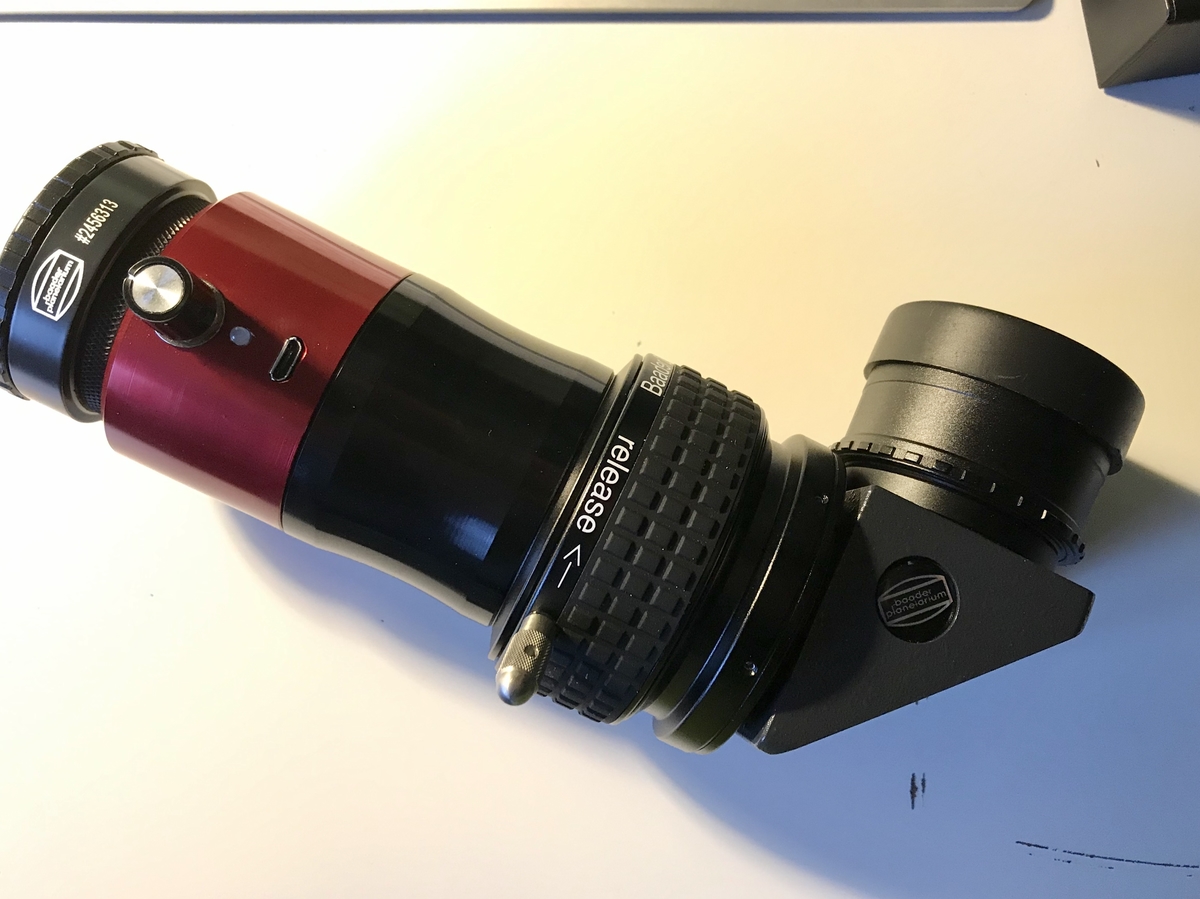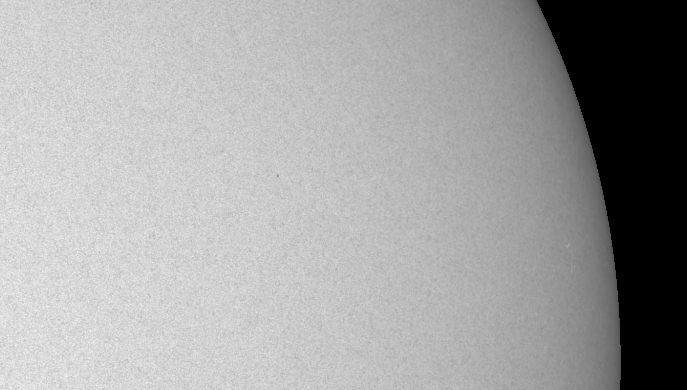-
Posts
812 -
Joined
-
Last visited
-
Days Won
1
Content Type
Profiles
Forums
Gallery
Events
Blogs
Posts posted by astro_al
-
-
Apparently my wife posted a picture of me on Facebook sporting a nice black tea towel on my head.....
I also sit out the front of our east-facing house most sunny mornings at the moment, much to the bemusement of the neighbours. Worth it though.
I like the look of the hoods.
-
 1
1
-
-
I tried a polarising filter but it wasn’t very subtle. It was like someone put a finger over the objective. I use the same filter with the Herschel wedge and it works much better for some reason.
-
4 hours ago, Wyvernp said:
You can actually see this happening in one of the latest Chuck's Astrophotography videos when his power supply for the Quark ran out. Have to say I did want to buy one after watching that!
I believe the Solar Scout is an integrated Quark and scope package sold by DayStar so what is shown in the video would be the same scenario for me when I unplugged my Quark. I am now wondering if I should cancel my order for new binoviewers and get a camera instead

-
4 hours ago, BGazing said:
If you turn the power off the view will not change much immediately. But it will degrade and become featureless soon. It takes longer for it to cool than to heat normally.
Thanks. Yes, that's what I see now I have spent more time with the Quark. I observed with the power off and then at -5 which showed the clear difference vs starting at -5 and then comparing to off but with the residual heat. Like you say it takes longer to cool, which I also saw yesterday when I had the Quark at 0 for a little while. When I set it back to -5 it took a long time to go green.
-
-
1 hour ago, Davey-T said:
lots of high milky cloud today
Same here, unfortunately.
-
 1
1
-
-
I am using a 3” F7.5 scope.
The Quark is set fully CCW at -5 and I even turned off the power today to see if the view changed much, and it didn’t. Going past 0 to +5 there is a big change with the views becoming more like those I see in white light. I believe that -5 is the lowest temperature setting so I am wondering if when I replace the UV/IR with the 35nm Ha filter if the internal temperature will drop and require a higher setting on the Quark. We will see, hopefully tomorrow.
I am also going to stop the aperture down to 60mm once a friend has printed this for me. This will move the scope from F32 to about F40. The image today is quite bright and I read on CN that a higher FR helps with the contrast of the surface details. Something else to experiment with.
I am sure the seeing is a contributing factor, coupled with the higher magnification when compared to my white light setup. I can see that there is detail, it’s just not very clear. -
Very nice! Sounds like you are all set.
I am about a week into owning mine and have been enjoying some interesting proms today. Not much in the way of surface detail so far though, regardless of the tuning.
-
Mine is on order from FLO. Part number 2458380
-
On 30/04/2020 at 08:15, astro_al said:
Currently I am using TV 25mm Plossls which have a 21mm field stop so no vignetting.
On closer inspection there is vignetting with the TV 25mm Plossls. Not sure why.
Update: it looks like this is down to the binoviewers, which is surprising as they are supposed to be 25mm clear aperture and there is nothing else in the light path I can think of that would cause the issue. Now that I was looking for it I could also clearly see the vignetting with the 25mms in the 2" Herschel wedge and the 2.6x GPC. It will be interesting to see how the Maxbright 2s perform in comparison once they arrive. The converted Zeiss unit does seem to struggle a bit when viewing the Sun or Moon. Internal reflections spill light into the FOV which lowers the contrast.
-
2 hours ago, BGazing said:
Re settings, have you found 'the one' or use different settings for different views?
I have only had about an hour with the Quark so far so not enough time to be conclusive. However so far I would say that close to fully CCW is the best - just as you have found.
-
I managed another session with the Quark this morning. The thin cloud was building so viewing deteriorated but while it was clear I got a chance to experiment with the tuning on the Quark. All the way to the right and I could easily pick out a sunspot group, closer to the white light view I am used to. The prom that was visible when the dial was straight up was nowhere to be seen. Switching the dial all the way to the left the prom was super clear. I could still see the sunspots now I knew where to look, but their appearance was noticeably different. I settled on two steps in from the left until the cloud came in.
I had added another 25mm to the diagonal via a T2 extension so the draw tube on the FC-76's focuser was racked nearly all the way in. Maybe this helped as I didn't find focusing as tricky to day on the Porta today. All in all really pleased with this as a grab and go setup.
-
1 hour ago, BGazing said:
Which adapter did you use? I see only Baader quick changer up there, obscuring whatever is beneath...
Not sure why there was talk of vignetting, 21mm at the top is mighty small to vignette.
The adapter is this one: https://www.firstlightoptics.com/adapters/astro-essentials-adapter-for-daystar-quark-to-t2.html
I believe the field stop of the 30mm LE is 27mm which is larger than both the Quark and the binoviewer's clear aperture (25mm). Currently I am using TV 25mm Plossls which have a 21mm field stop so no vignetting.
-
 1
1
-
-
1 hour ago, Chinapig said:
I now have a Tak-friendly Baader 2" clicklock adapter and, from your tests, looks like this should give me that wee bit of extra focus leeway.
Yes, I think that will do it. Good luck.
-
 1
1
-
-
1 hour ago, Davey-T said:
Whereabouts are you in Kent ?
A few miles south of Gravesend - so not far from you.
-
 1
1
-
-
There was an unexpected break in the clouds this morning so I set the Quark and binoviewer up on the Porta II to check on the back focus situation. I was fully expecting to be disappointed but.... it almost came to focus on the first try
 . There wasn't enough outward travel! Apologies for doubting those posts online that said it wouldn't be an issue.
. There wasn't enough outward travel! Apologies for doubting those posts online that said it wouldn't be an issue.
In the end I added the shortest adapter that comes with the FC-76DC ahead of the Baader clicklock and could reach focus easily. It may work with just the Tak 2" adapter, although I may just add a longer T2 extension to the diagonal so I can swap in the Herschel wedge without re-configuring. This will also work in the FC-100DC and the FS-152, although not planning on using the latter.
The Quark came up to temperature while I was sorting this out and I could see surface detail and what looked like a prom at about 11 o'clock. Focusing was hard at almost 100X on the Porta but not impossible. After the lime green of the continuum filter I am loving the rich red of Ha.
Looking forward to getting this setup on the pier-mounted AZ-EQ6 when there is a longer spell of sunshine so I can experiment with the Quark's settings.
FOV was as expected based on the 4.3X amplification, not quite a full disk. Once the astro funds are replenished I may get a pair of Tak 30mm LEs to drop the magnification a bit despite the vignetting.
All in all a nice surprise and looking forward to spending more time in the sun.
-
 2
2
-
-
On 29/02/2020 at 11:48, astro_al said:
I guess the 4.2x barlow in the quark will push the focal plane further out still, but I have no idea if that is enough to accommodate the physical dimension of the Quark.
My Quark arrived today. I reconfigured a Baader prism diagonal to use the 2” clicklock from the Baader Herschel wedge. This holds the Quark nicely. A 5mm extension was required to allow the diagonal’s nosepiece to clear the width of the clicklock. I also swapped the Quark’s eyepiece holder for an adapter to use the Baader quick changer for my binoviewer.
All in all it’s about another 135mm of additional back focus. My 76 and 100mm refractors have about 35mm available when using the 2.6x glasspath corrector with the binoviewer so that still leaves 100mm to find from switching to the Quark’s inbuilt 4.3x barlow which seems like a push. I guess we will see.
-
49 minutes ago, mikeDnight said:
Congratulations on the new DC.

Thanks @mikeDnight. One previous (careful) owner
 . I am loving it on the AZ-EQ6, much less scary to mount than the FS-152.
. I am loving it on the AZ-EQ6, much less scary to mount than the FS-152.
-
 1
1
-
-
Thank you @JeremyS.
39 minutes ago, JeremyS said:Yes the tripods make a difference, but it's mainly the mount itself.
That's good to know. The AZ5 looks good on the Berlebach tripod, very nice. I wonder if it would go in the APP-TL130 tripod....
-
 1
1
-
-
Having now had regular use out of the Porta II mount for three months I thought I would write a quick review.
I procrastinated about this purchase for some time knowing that I could by a Berlebach tripod and Castor mount combination for the same price. The Berlebach setup was my previous grab-and-go mount which I loved but foolishly sold thinking I wouldn't need it anymore after putting in a permanent pier and AZ-EQ6. Not buying this again felt like a risk, but in the end the idea of the slow motion controls won out over dual mounting; and the decision went Vixen's way.
The version of the Porta II mount purchased is the one with the APP-TL130 tripod. I went with this as I had read that the stock tripod was the weakest link when operating with a scope approaching or at the recommended 5KG weight limit. I also picked up a second-hand Losmandy saddle even before the Vixen arrived as I wanted to use both Vixen and Losmandy dovetails. The mount came with a carry bag which I haven't had the need to use.

The mount was purchased to use with my FOA-60Q and FC-76DC. Both are lightweight OTAs (< 2KG) but I only user a binoviewer these days so the total weight all in is about 4.2KG when using a 2" Herschel wedge and about 3.8KG for night time use.
First impression was that it looked the part but I quickly became annoyed with the flexible slow motion controls falling off. Swapping the thumbscrews for socket head bolts was an easy fix. I leave the altitude control permanently attached but have to remove the azimuth control when collapsing the tripod for storage. The APP-TL130 tripod is nice and compact and I like that it has spiked feet that can be simply hidden by unscrewing the rubber feet.
After about a month of use I started to feel the slow motion controls bind. On inspection I realised that both the altitude and azimuth axes were loose and now allowed enough play for the weight of the telescope to cause the two sides of the rotating parts to rub. The azimuth axis was worse, presumably due to the off-set design of the mount. While ergonomically this is helpful when looking at objects near the zenith, it does mean that a well balanced scope in the altitude axis is rear heavy on the azimuth axis.
I disassembled the azimuth axis, checked everything and tightened the main nut. This sorted the issue, but only briefly and I was soon back to rough slow motion controls. I repeated the disassembly but this time in both axes, and this time I tightened each nut significantly.
Not unexpectedly this reduced the free-flowing movement of the mount and it now takes more effort to align the scope on a target, typically one hand on the scope and one on the tripod. This is actually OK for my type of viewing. I am more of a lunar/planet/solar observer when it comes to grab-and-go anyway so I am not darting around the sky. The slow motion controls are buttery smooth again and so far the play in the axes hasn't returned.
When it comes to magnification on solar system objects, I am happiest with an exit pupil of about 1mm when using the binoviewer. For the scopes the mount was purchased for this means a magnification range of about 55 to 90x. The Porta II and APP-TL130 handle this well but I find that over 100x the dampening time increases noticeably, especially with the F15 tube of the FOA-60Q. I typically use the tripod with the first section half extended. With the first section fully extended damping time increases.
I have recently picked up a FC-100DC which for night time viewing is pretty much on the weight limit for the Porta II and about 400G over with the Herschel wedge added for solar viewing. In its tightened configuration the Porta II head feels like it will support the scope, but the dampening time is too high for my liking, even at lower magnifications with the tripod at its lowest. I suspect that using the Porta II with the heavier Vixen HAL-130 tripod would improve this so I may go that way if I find myself wanting to use the FC-100DC on this mount. This would become slightly less of a grab-and-go setup though, however the main reason for the purchase of the Porta II is to view objects not visible if I set up on the permanent pier - like the sun first thing in the morning.
I do like this mount. I prefer the slow motion controls to nudging the mount along and it now works great for what I use it for. However, I think if I wanted to do more than observe solar system objects then I would have a different opinion as the need to over-tighten the axes to eliminate slop when using scopes below the weight limit is not great.
My conclusion is that if you enjoy the freedom of flinging your scope around to all areas of the sky and have a payload of more than 3KG then look elsewhere. I would choose a Berlebach Castor, Giro, Ercole etc. for this. If, like me, you stick to the bright stuff when away from GOTO and you like slow motion controls then the Porta II is worth a look. I would also be interested to see how the Skywatcher AZ5 compares.
Clear skies.
Al
-
 5
5
-
 1
1
-
-
I could see two spots about 11am today in the 152 at about 90x. Not as black as sunspots though. It looked like there was another fainter pair to the bottom left. The seeing was pretty mediocre though.
-
 1
1
-
-
I had a look at around 8:30am this morning with the 60mm. Seeing was good. I could see what looked like two groups. The top group was clearly spit into three in a tight triangle, with the bottom pair very black and the top one less so, maybe a pore? The bottom group could have just been a single spot but I could see a bright area in the center so may have been multiple but out of the reach of the 60mm.
Checked online just now and it looks completely different! Amazing how quickly it changes.
-
 2
2
-
-
9 hours ago, Stu said:
The larger of the two spots splits into two with the right conditions,
I noticed this also.
Managed three short sessions today with the 60mm. The most activity I have seen since buying the Herschel wedge.
-
 2
2
-
-















Baader MaxBright-II Binoviewer Review
in Member Equipment Reviews
Posted
Good question. I have a pair on order that I was planning on using for H-alpha.